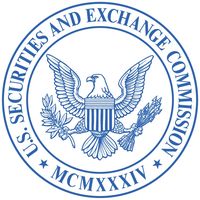The Tariff Tsunami: How Trump's Policies Crashed the Market
April 4, 2025, 3:33 am

Location: United States, District of Columbia, Washington
Employees: 1001-5000
Founded date: 1934
Total raised: $392.5M
The stock market is a fickle beast. One moment it soars, the next it plummets. On April 2, 2025, it was the latter. President Donald Trump’s sweeping tariff announcement sent shockwaves through Wall Street, triggering the most significant one-day loss since 2020. The Dow Jones Industrial Average fell by nearly 1,700 points, while the S&P 500 and Nasdaq Composite followed suit, diving into correction territory. Investors watched in horror as their portfolios shrank, losing nearly $2 trillion in value.
The day began with a sense of unease. The market had been on edge, bracing for the impact of Trump’s tariffs. The S&P 500 had already dipped five out of the last six weeks, and uncertainty loomed like a dark cloud. As the clock ticked closer to the announcement, traders held their breath. The news hit like a thunderclap. A baseline tariff rate of 10% on all countries would take effect immediately, with even steeper rates for those that retaliated against the U.S. This was not the cautious approach investors had hoped for.
The fallout was swift and brutal. The S&P 500 dropped 4.84%, closing at 5,396.52. The Nasdaq plummeted 5.97%, ending at 16,550.61. The Dow, that venerable index, fell 1,679.39 points, marking its worst day since June 2020. The broad market index now sat 12% below its record high from February, a stark reminder of how quickly fortunes can change.
Multinational companies bore the brunt of the impact. Giants like Nike and Apple saw their shares tumble by 14% and 9%, respectively. Retailers that relied heavily on imports were particularly hard hit. Five Below plunged nearly 28%, while Dollar Tree and Gap fell by 13% and 20%. The tech sector, usually a safe haven, was not spared. Nvidia and Tesla saw declines of 8% and 5%, respectively. It was a bloodbath across the board.
The market’s reaction was not just about numbers; it was about fear. Investors fled to bonds, seeking refuge from the storm. The benchmark 10-year Treasury yield fell to 4%, signaling a flight to safety. Economists warned that a recession was now likely if these tariffs remained in place. The uncertainty had already begun to seep into economic data, raising red flags about future growth.
Trump’s administration had painted a picture of optimism, likening the tariff implementation to a surgical operation. But for many investors, it felt more like a car crash. The reality was stark: the markets were not prepared for such aggressive measures. Analysts noted that the effective tariff rate for China could soar to 54%, a figure that sent chills down the spine of Wall Street.
The market had been hoping for a cap on tariffs, not a minimum starting point. This miscalculation led to a risk-off reaction, with traders scrambling to reassess their positions. The question on everyone’s mind was whether the S&P 500 could hold the 5,500 mark. If it didn’t, further declines of 5-10% could be on the horizon.
In the midst of the chaos, some stocks managed to defy gravity. Coca-Cola rose 2.5%, a beacon of stability in a turbulent sea. The beverage giant, often seen as a consumer staple, benefited from a flight to safety. Its strong brand loyalty provided a cushion against the broader market’s woes.
Bank stocks, however, were not so fortunate. The SPDR S&P Bank ETF lost around 8%, while the SPDR S&P Regional Banking ETF dove more than 9%. Concerns about a slowdown in economic activity weighed heavily on financial firms, as less spending translates to fewer transactions. The ripple effects of Trump’s tariffs were being felt across the economy.
The implications of these tariffs extend beyond immediate market reactions. Fitch Ratings estimated that the overall tariff rate could reach 25%, the highest in over a century. This raises significant concerns about inflation and growth. UBS strategists warned that prolonged tariffs could push inflation close to 5% and compromise U.S. GDP growth by 1.5-2 percentage points.
The small-cap stocks, often seen as a barometer for economic health, entered bear market territory. The Russell 2000 Index fell more than 5%, marking a significant decline from its recent highs. Retailers like Victoria’s Secret and Urban Outfitters led the charge downward, reflecting the broader market’s struggles.
As the dust settled, it became clear that the market was grappling with more than just tariffs. It was facing a crisis of confidence. Business leaders were losing optimism about the economy, and surveys indicated a decline in corporate confidence. The mood was somber, with many fearing that the worst was yet to come.
In the wake of the tariff announcement, the dollar weakened against other currencies, signaling global unease. The ICE U.S. Dollar Index fell 2.2%, a sharp reversal from its earlier strength. Investors were seeking safe havens, and the Japanese yen appreciated as a result.
The volatility index, known as the VIX, surged, reflecting the heightened uncertainty. Traders were bracing for more turbulence ahead. The market had entered a new phase, one marked by unpredictability and fear.
In conclusion, Trump’s tariff announcement was a wake-up call for investors. The market’s swift reaction highlighted the fragility of the current economic landscape. As uncertainty reigns, the question remains: how will the markets navigate this storm? Only time will tell, but for now, the clouds are dark, and the road ahead is fraught with challenges.
The day began with a sense of unease. The market had been on edge, bracing for the impact of Trump’s tariffs. The S&P 500 had already dipped five out of the last six weeks, and uncertainty loomed like a dark cloud. As the clock ticked closer to the announcement, traders held their breath. The news hit like a thunderclap. A baseline tariff rate of 10% on all countries would take effect immediately, with even steeper rates for those that retaliated against the U.S. This was not the cautious approach investors had hoped for.
The fallout was swift and brutal. The S&P 500 dropped 4.84%, closing at 5,396.52. The Nasdaq plummeted 5.97%, ending at 16,550.61. The Dow, that venerable index, fell 1,679.39 points, marking its worst day since June 2020. The broad market index now sat 12% below its record high from February, a stark reminder of how quickly fortunes can change.
Multinational companies bore the brunt of the impact. Giants like Nike and Apple saw their shares tumble by 14% and 9%, respectively. Retailers that relied heavily on imports were particularly hard hit. Five Below plunged nearly 28%, while Dollar Tree and Gap fell by 13% and 20%. The tech sector, usually a safe haven, was not spared. Nvidia and Tesla saw declines of 8% and 5%, respectively. It was a bloodbath across the board.
The market’s reaction was not just about numbers; it was about fear. Investors fled to bonds, seeking refuge from the storm. The benchmark 10-year Treasury yield fell to 4%, signaling a flight to safety. Economists warned that a recession was now likely if these tariffs remained in place. The uncertainty had already begun to seep into economic data, raising red flags about future growth.
Trump’s administration had painted a picture of optimism, likening the tariff implementation to a surgical operation. But for many investors, it felt more like a car crash. The reality was stark: the markets were not prepared for such aggressive measures. Analysts noted that the effective tariff rate for China could soar to 54%, a figure that sent chills down the spine of Wall Street.
The market had been hoping for a cap on tariffs, not a minimum starting point. This miscalculation led to a risk-off reaction, with traders scrambling to reassess their positions. The question on everyone’s mind was whether the S&P 500 could hold the 5,500 mark. If it didn’t, further declines of 5-10% could be on the horizon.
In the midst of the chaos, some stocks managed to defy gravity. Coca-Cola rose 2.5%, a beacon of stability in a turbulent sea. The beverage giant, often seen as a consumer staple, benefited from a flight to safety. Its strong brand loyalty provided a cushion against the broader market’s woes.
Bank stocks, however, were not so fortunate. The SPDR S&P Bank ETF lost around 8%, while the SPDR S&P Regional Banking ETF dove more than 9%. Concerns about a slowdown in economic activity weighed heavily on financial firms, as less spending translates to fewer transactions. The ripple effects of Trump’s tariffs were being felt across the economy.
The implications of these tariffs extend beyond immediate market reactions. Fitch Ratings estimated that the overall tariff rate could reach 25%, the highest in over a century. This raises significant concerns about inflation and growth. UBS strategists warned that prolonged tariffs could push inflation close to 5% and compromise U.S. GDP growth by 1.5-2 percentage points.
The small-cap stocks, often seen as a barometer for economic health, entered bear market territory. The Russell 2000 Index fell more than 5%, marking a significant decline from its recent highs. Retailers like Victoria’s Secret and Urban Outfitters led the charge downward, reflecting the broader market’s struggles.
As the dust settled, it became clear that the market was grappling with more than just tariffs. It was facing a crisis of confidence. Business leaders were losing optimism about the economy, and surveys indicated a decline in corporate confidence. The mood was somber, with many fearing that the worst was yet to come.
In the wake of the tariff announcement, the dollar weakened against other currencies, signaling global unease. The ICE U.S. Dollar Index fell 2.2%, a sharp reversal from its earlier strength. Investors were seeking safe havens, and the Japanese yen appreciated as a result.
The volatility index, known as the VIX, surged, reflecting the heightened uncertainty. Traders were bracing for more turbulence ahead. The market had entered a new phase, one marked by unpredictability and fear.
In conclusion, Trump’s tariff announcement was a wake-up call for investors. The market’s swift reaction highlighted the fragility of the current economic landscape. As uncertainty reigns, the question remains: how will the markets navigate this storm? Only time will tell, but for now, the clouds are dark, and the road ahead is fraught with challenges.
